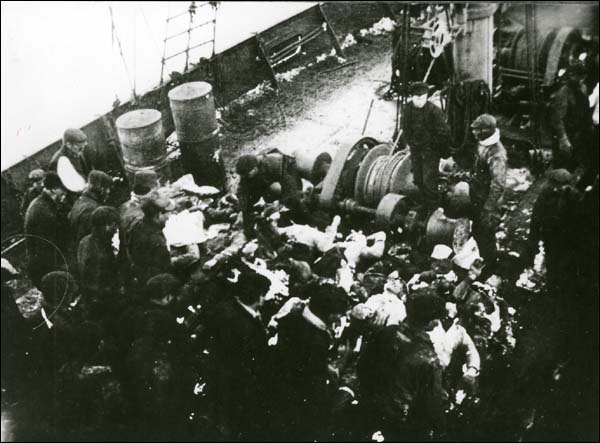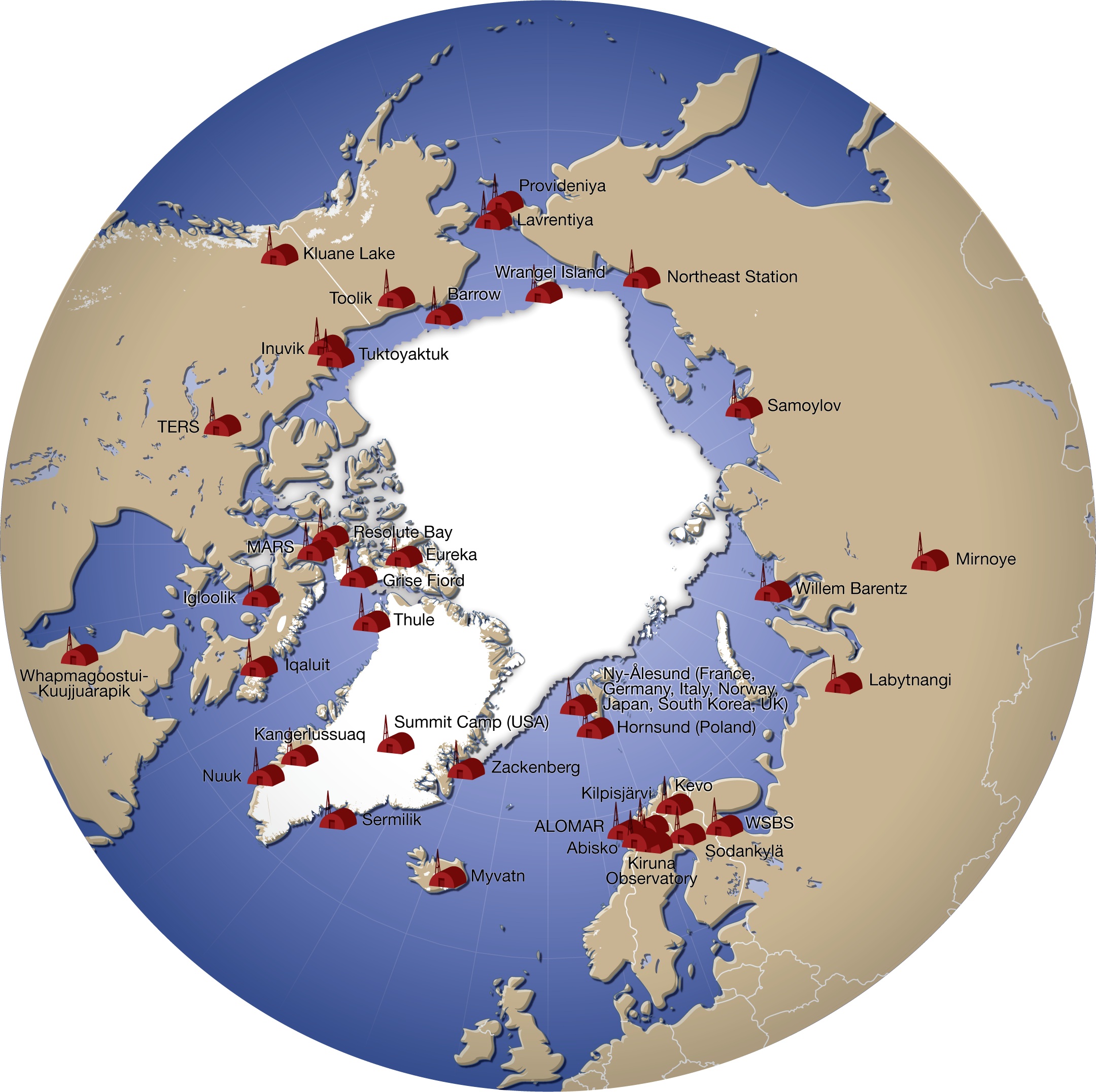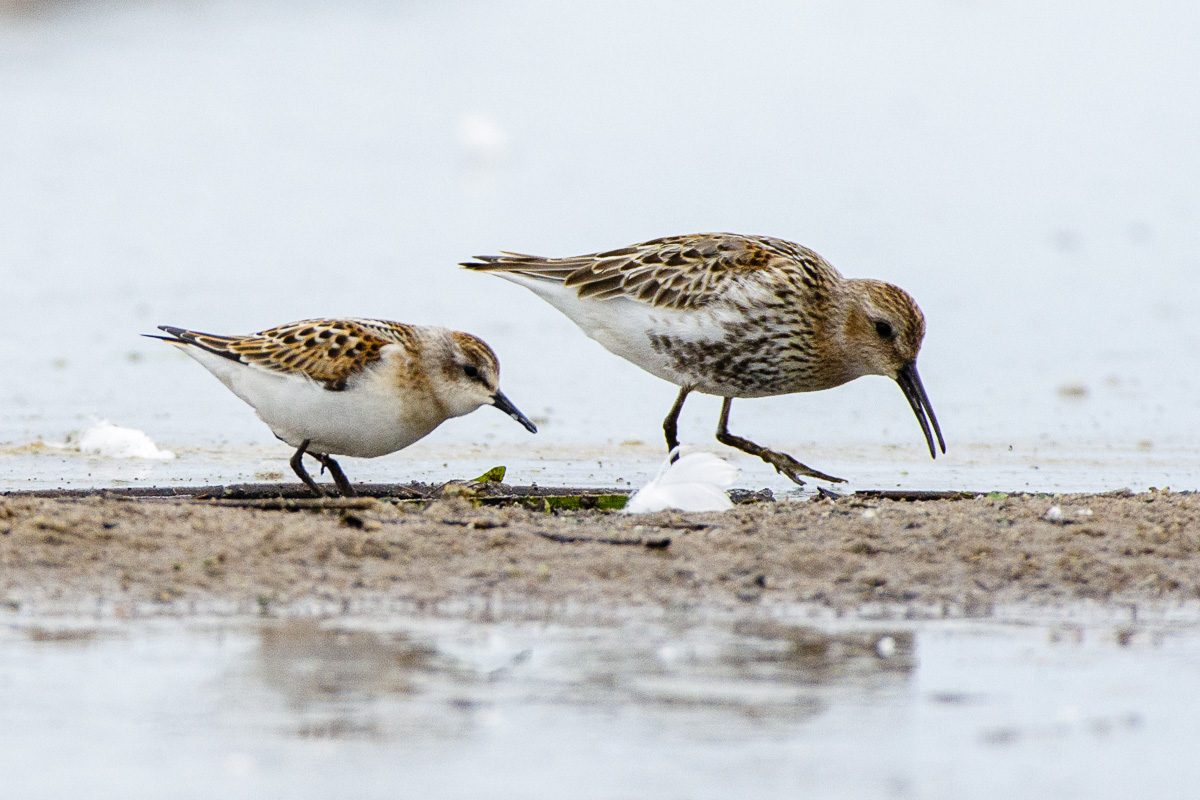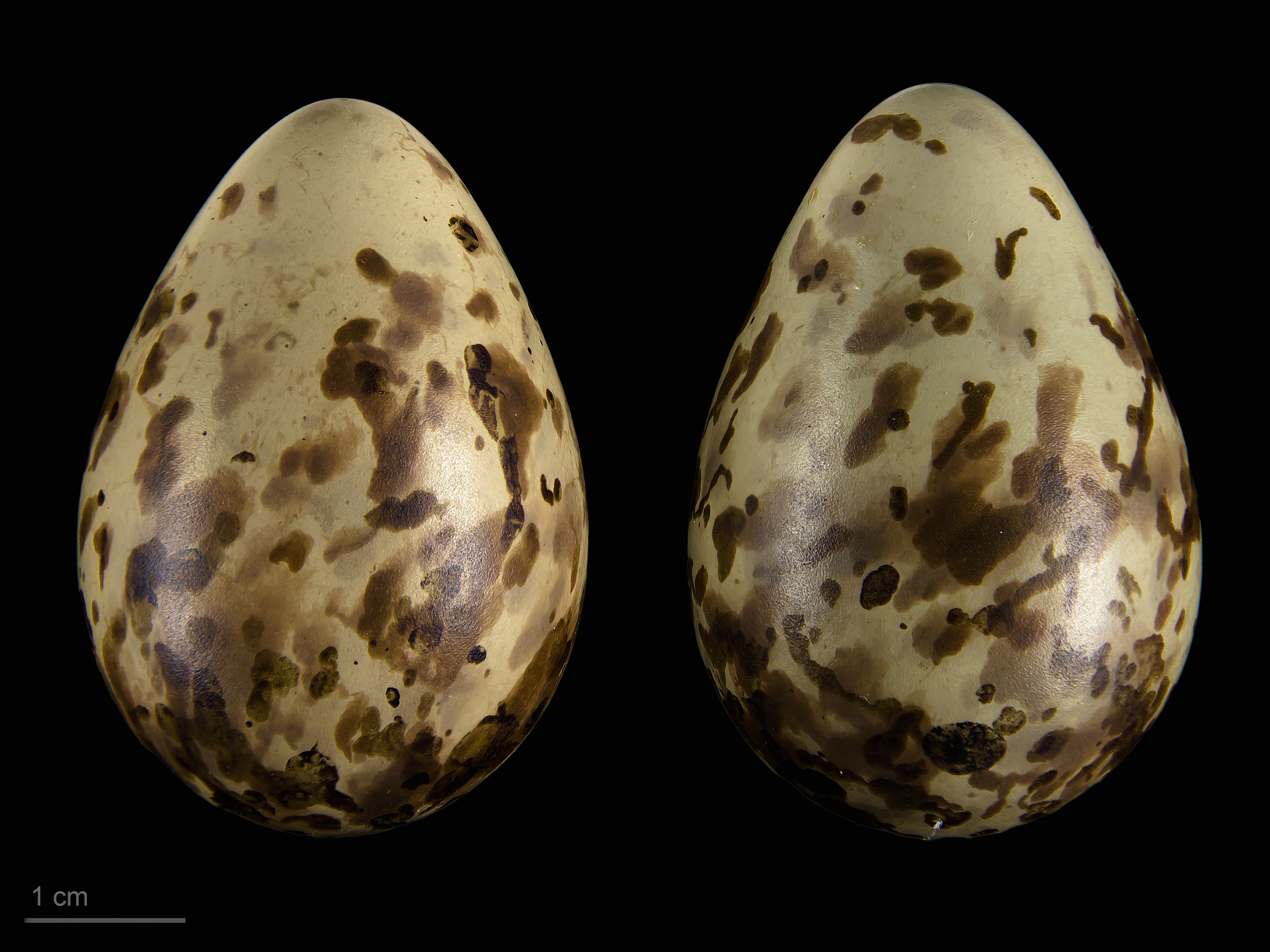|
Russky Island (Kara Sea)
Russky Island (russian: Ру́сский о́стров, translation=Russian Island), also spelt Russkyy and Russkiy, is an island in the Kara Sea. It is located in the Litke Islands subgroup of the Nordenskiöld Archipelago. Geography With an area of 309 km2, Russky is the biggest island in the whole archipelago. At a latitude of 77° 03' N, it is also the northernmost island of the group. The climate in the northernmost end of the archipelago is severe, and the sea surrounding Russky Island is covered with fast ice in the winter and often obstructed by pack ice even in the Arctic summer. Administratively Russky Island belongs to the Krasnoyarsk Krai, of the Russian Federation. It is also part of the Great Arctic State Nature Reserve, the largest nature reserve of Russia. History In 1935, during Soviet times, an Arctic station was established in Russky Island. This outpost was part of the building of a modern polar station network undertaken by the Chief Directorate of the ... [...More Info...] [...Related Items...] OR: [Wikipedia] [Google] [Baidu] |
Kara Sea
The Kara Sea (russian: Ка́рское мо́ре, ''Karskoye more'') is a marginal sea, separated from the Barents Sea to the west by the Kara Strait and Novaya Zemlya, and from the Laptev Sea to the east by the Severnaya Zemlya archipelago. Ultimately the Kara, Barents and Laptev Seas are all extensions of the Arctic Ocean north of Siberia. The Kara Sea's northern limit is marked geographically by a line running from Cape Kohlsaat in Graham Bell Island, Franz Josef Land, to Cape Molotov (Arctic Cape), the northernmost point of Komsomolets Island in Severnaya Zemlya. The Kara Sea is roughly long and wide with an area of around and a mean depth of . Its main ports are Novy Port and Dikson and it is important as a fishing ground although the sea is ice-bound for all but two months of the year. The Kara Sea contains the East-Prinovozemelsky field (an extension of the West Siberian Oil Basin), containing significant undeveloped petroleum and natural gas. In 2014, US gov ... [...More Info...] [...Related Items...] OR: [Wikipedia] [Google] [Baidu] |
Sibiryakov (1909 Icebreaker)
''Alexander Sibiryakov'' (Russian ''Александр Сибиряков'') was a steamship that was built in Scotland in 1909 as ''Bellaventure'', and was originally a seal hunting ship in Newfoundland. In 1917 the Russian government bought her to be an icebreaker. She served the RSFSR and Soviet Union until 1942, when she was sunk by enemy action. The ship gave notable service in the Russian Arctic during the 1930s. The ship was recorded as ''Bellaventure'' until at least 1920. By 1927 she had been renamed ''Александр Сибиряков''. In the Latin alphabet her name was rendered ''Alexander Sibiriakov'' until at least 1935. This had been changed to ''Alexander Sibiryakov'' by 1939. Building In 1908 A Harvey & Co of St John's, Newfoundland ordered a pair of ships from shipbuilders in Glasgow, Scotland. D&W Henderson Ltd built ''Bellaventure'', launching her on 23 November 1908. Napier and Miller built her sister ship ''Bonaventure'', launching her on 5 December ... [...More Info...] [...Related Items...] OR: [Wikipedia] [Google] [Baidu] |
Islands Of The Nordenskiöld Archipelago
An island or isle is a piece of subcontinental land completely surrounded by water. Very small islands such as emergent land features on atolls can be called islets, skerries, cays or keys. An island in a river or a lake island may be called an eyot or ait, and a small island off the coast may be called a holm. Sedimentary islands in the Ganges Delta are called chars. A grouping of geographically or geologically related islands, such as the Philippines, is referred to as an archipelago. There are two main types of islands in the sea: continental islands and oceanic islands. There are also artificial islands (man-made islands). There are about 900,000 official islands in the world. This number consists of all the officially-reported islands of each country. The total number of islands in the world is unknown. There may be hundreds of thousands of tiny islands that are unknown and uncounted. The number of sea islands in the world is estimated to be more than 200,000. The to ... [...More Info...] [...Related Items...] OR: [Wikipedia] [Google] [Baidu] |
Eduard Von Toll
Eduard Gustav Freiherr von Toll (russian: Эдуа́рд Васи́льевич Толль, translit=Eduárd Vasíl'evič Toll'; 1902), better known in Russia as Eduard Vasilyevich Toll and often referred to as Baron von Toll, was a Russian geologist and Arctic explorer. He is most notable for leading the Russian polar expedition of 1900–1902 in search of the legendary Sannikov Land, a phantom island purported to lie off Russia's Arctic coast. During the expedition, Toll and a small party of explorers disappeared from Bennett Island, and their fate remains unknown to this day. Early life Eduard von Toll was born on , in Reval of the Governorate of Estonia (now Tallinn, Estonia). He belonged to the Baltic German noble Toll family and was married to Emmeline "Emmy" Magdalene . His family's origin was debated, but genealogists had suggested them to be of Hollandish origin and was originated in Leiden. He was a close relative of the Middendorff family, and one of the Toll's ... [...More Info...] [...Related Items...] OR: [Wikipedia] [Google] [Baidu] |
William Barr (Arctic Historian)
William Barr (born 1940) is a Scottish historian now resident of Calgary, Canada, with a specific interest in the history of exploration of the Arctic, and to a lesser degree, the Antarctic. He holds degrees in Geography from the University of Aberdeen, Scotland and McGill University, Montreal, Canada. From 1968 until 1999 he was a member of the faculty of the Department of Geography, University of Saskatchewan, Saskatoon, Canada and is now a professor emeritus there. Since 1999 he is a Research Fellow in residence at the Arctic Institute of North America, University of Calgary. For the past 30 years the history of the exploration of the Arctic has been the focus of his research. He has published 16 books, including translations from French, German, and Russian. In 2006, William Barr received a Lifetime Achievement Award for his contributions to the recorded history of the Canadian North from the Canadian Historical Association. Most of the titles of his works show that Willia ... [...More Info...] [...Related Items...] OR: [Wikipedia] [Google] [Baidu] |
Valerian Albanov
Valerian Ivanovich Albanov (russian: Валериа́н Ива́нович Альбанов; 26 May 1881 – 1919) was a Russian navigator, best known for being one of two survivors of the Brusilov expedition of 1912, which killed 22. Early life Albanov was born in 1881 in Voronezh and was raised by his uncle in the city of Ufa. At the age of seventeen he entered the Naval College at Saint Petersburg, from which he graduated in 1904. Brusilov expedition He served on board a number of ships before signing on as navigator aboard the , under Captain Georgy Brusilov, for an intended expedition to traverse the Northern Sea Route – a feat which only once before had been successfully completed, by explorer Adolf Erik Nordenskiöld. The expedition was ill-planned and ill-executed by Brusilov, and the ''Svyataya Anna'' became locked in the sea ice of the Kara Sea in October 1912. Supplies were abundant, so officers and crew prepared themselves for wintering, hopi ... [...More Info...] [...Related Items...] OR: [Wikipedia] [Google] [Baidu] |
List Of Research Stations In The Arctic
A number of governments maintain permanent research stations in the Arctic. Also known as Arctic bases, polar stations or ice stations, these bases are widely distributed across the northern polar region of Earth. Historically few research stations have been permanent. Most of them were temporary, being abandoned after the completion of the project or owing to lack of funding to continue the research. Some of these were military or intelligence stations (listening posts) created as a result of the proximity of the U.S. and Soviet Union to each other's landmass across the polar region. Ice stations are constructed on land or on ice that rests on land, while others are drifting ice stations built on the sea ice of the high latitudes of the Arctic Ocean. Research stations Drifting ice stations *Fletcher's Ice Island, US (1952 - 1978) In fiction *Ice Station Zebra (novel), by Alistair MacLean **Ice Station Zebra (1968 film) **Ice Station Zebra a song by Jack White on Boar ... [...More Info...] [...Related Items...] OR: [Wikipedia] [Google] [Baidu] |
List Of Islands Of Russia
A ''list'' is any set of items in a row. List or lists may also refer to: People * List (surname) Organizations * List College, an undergraduate division of the Jewish Theological Seminary of America * SC Germania List, German rugby union club Other uses * Angle of list, the leaning to either port or starboard of a ship * List (information), an ordered collection of pieces of information ** List (abstract data type), a method to organize data in computer science * List on Sylt, previously called List, the northernmost village in Germany, on the island of Sylt * ''List'', an alternative term for ''roll'' in flight dynamics * To ''list'' a building, etc., in the UK it means to designate it a listed building that may not be altered without permission * Lists (jousting), the barriers used to designate the tournament area where medieval knights jousted * ''The Book of Lists'', an American series of books with unusual lists See also * The List (other) * Listing ... [...More Info...] [...Related Items...] OR: [Wikipedia] [Google] [Baidu] |
Little Stint
The little stint (''Calidris minuta'' or ''Erolia minuta''), is a very small wader. It breeds in arctic Europe and Asia, and is a long-distance migrant, wintering south to Africa and south Asia. It occasionally is a vagrant to North America and to Australia. The genus name is from Ancient Greek ''kalidris'' or ''skalidris'', a term used by Aristotle for some grey-coloured waterside birds. The specific ''minuta'' is Latin for "small. Description Its small size, fine dark bill, dark legs and quicker movements distinguish this species from all waders except the other dark-legged stints. It can be distinguished from these in all plumages by its combination of a fine bill tip, unwebbed toes and long primary projection. The call is a sharp "stit". The breeding adult has an orange wash to the breast, a white throat and a strong white V on its back. In winter plumage identification is difficult. Juveniles have pale crown stripes and a pinkish breast. An apparent hybrid between this ... [...More Info...] [...Related Items...] OR: [Wikipedia] [Google] [Baidu] |
Sanderling
The sanderling (''Calidris alba'') is a small wading bird. The name derives from Old English ''sand-yrðling'', "sand-ploughman". The genus name is from Ancient Greek ''kalidris'' or ''skalidris'', a term used by Aristotle for some grey-coloured waterside birds. The specific, ''alba'', is Latin for "white". It is a circumpolar Arctic breeder, and is a long-distance migrant, wintering south to South America, South Europe, Africa, and Australia. It is highly gregarious in winter, sometimes forming large flocks on coastal mudflats or sandy beaches. It is somewhat unlike other sandpipers in appearance, which has led to the suggestion that it should be placed into a monotypic genus ''Crocethia''. A more recent review (Thomas ''et al.'', 2004) indicates, however, that the sanderling is a fairly typical "stint" or small sandpiper and should be separated from the large knots with its closest relatives in a distinct genus. This bird is similar in size to a dunlin, but stouter, with a ... [...More Info...] [...Related Items...] OR: [Wikipedia] [Google] [Baidu] |
Turnstone
Turnstones are two bird species that comprise the genus ''Arenaria'' in the family Scolopacidae. They are closely related to calidrid sandpipers and might be considered members of the tribe Calidriini. The genus ''Arenaria'' was introduced by the French zoologist Mathurin Jacques Brisson in 1760 with the ruddy turnstone (''Arenaria interpres'') as the type species. The genus name ''arenaria'' is from Latin ''arenarius'', "inhabiting sand", from ''arena'', "sand". The genus contains two species: the ruddy turnstone (''Arenaria interpres'') and the black turnstone (''Arenaria melanocephala''). Both birds are waders. Their length is typically between 20 and 25 cm, with a wingspan between 50 and 60 cm and a body mass between 110 and 130g. For waders their build is stocky, with short, slightly upturned, wedge shaped bills. They have white patches on the back, wings and tail. They are high Arctic breeders, and are migratory. Their strong necks and powerful, slightly upturn ... [...More Info...] [...Related Items...] OR: [Wikipedia] [Google] [Baidu] |
Purple Sandpiper
The purple sandpiper (''Calidris maritima'') is a small shorebird in the sandpiper family Scolopacidae. This is a hardy sandpiper that breeds in the arctic and subarctic regions of Eurasia and North America and winters further south on the Atlantic coast. Taxonomy The purple sandpiper was formally described in 1764 by the Danish zoologist Morten Thrane Brünnich and given the binomial name ''Tringa maratina''. This species was formerly placed in the genus ''Erolia''. It is now placed with 23 other sandpipers in the genus ''Calidris'' that was introduced in 1804 by the German naturalist Blasius Merrem. The genus name is from Ancient Greek ''kalidris'' or ''skalidris'', a term used by Aristotle for some grey-coloured waterside birds. The specific epithet ''maritima'' is from Latin and means "of the sea", from ''mare'', "sea". The purple sandpiper is treated as monotypic: no subspecies are recognised. Within the genus ''Calidris'' the purple sandpiper is sister to the rock sandpipe ... [...More Info...] [...Related Items...] OR: [Wikipedia] [Google] [Baidu] |







_feeding.jpg)
.jpg)
